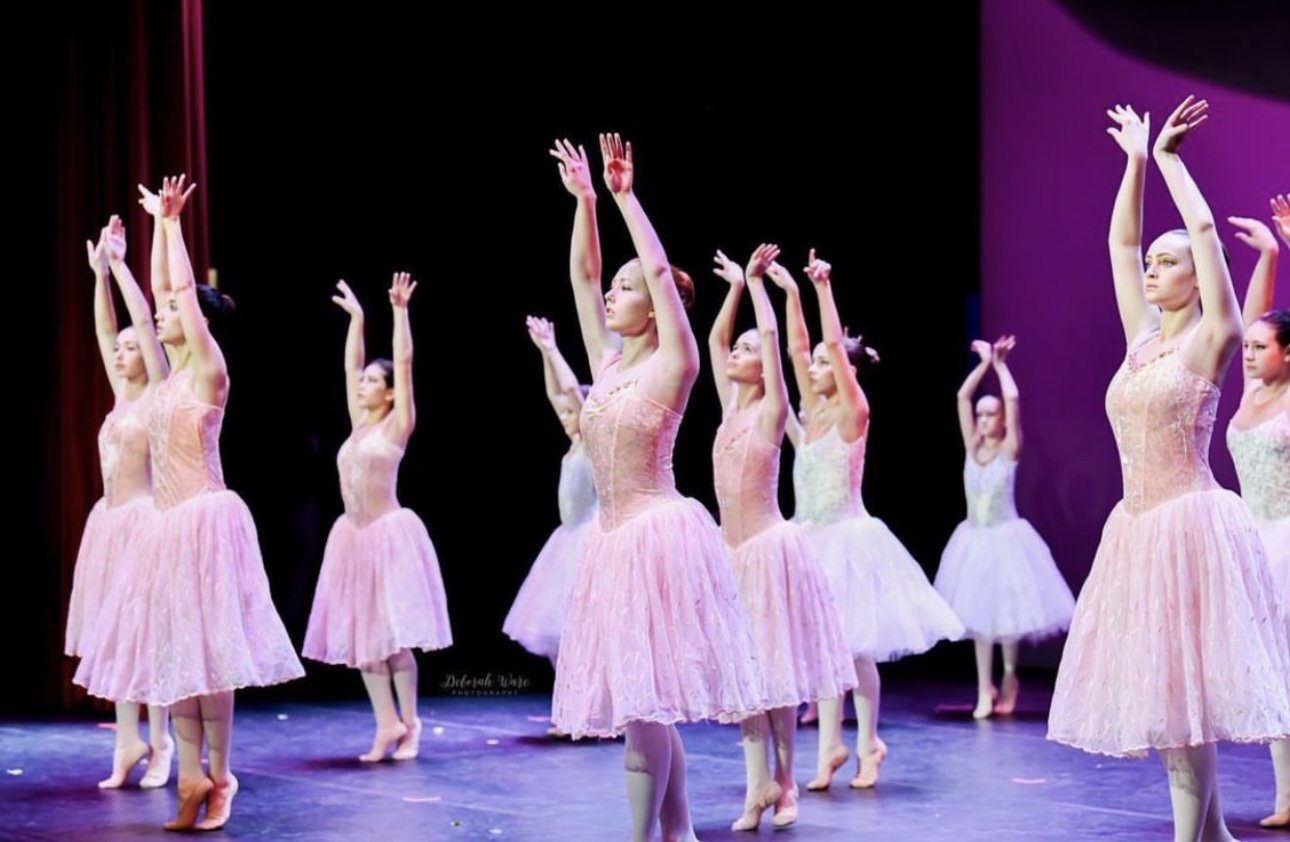
Dance Classes
Ballet Classes
Children’s Division
Pre-Primary (ages 3-4) and Primary (ages 5-6) Levels
These introductory levels to classical ballet are designed for young children. Students will learn to take simple directions from the teacher while developing flexibility, musicality, and refining motor skills. Emphasis is placed on:
eye-hand/eye-foot exercises for basic coordination
lengthening attention span & following instructions
timing, rhythm, musicality, & expression
basic classroom etiquette
simple ballet terminology
basic movement themes such as jumping, balletic runs, walks, spinning, and skipping
working in simple formations (lines and circles)
identifying directions (right, left, forward, backward, etc.)
Level 1 (ages 7-9)
Level 1 is where the basic building blocks of ballet are introduced and classes become much more structured. This level introduces elementary exercises for mastering the placement of the body, legs, arms & head, and developing elementary skills in the coordination of steps. Basic musicality & rhythm, “safe & healthy” rotation mechanisms, and the proper serious attitude toward the art are emphasized. Students are introduced to the foundations of barre work in order to develop proper alignment and classical technique.
Level 2 (ages 9-11)
Building on what was learned in Level 1, students continue to build their vocabulary with new exercises at the barre and in the center in order to continue developing proper alignment and classical technique.
Level 3 (ages 11-13)
Classwork continues to improve the dancer’s spatial awareness and orientation of the body. At this level, an emphasis is placed on turning, jumping, and linking steps. Students are expected to show awareness of basic technique, appropriate timing, and musicality. Classical ballet lines should be established along with a new vocabulary for traveling steps, elevation, and pirouettes. This level continues to consolidate the basic elements of posture, aplomb, transference of weight, with increased use of the demi-pointe.
Pre-Professional Division
Level 4 (placement required)
Students at this level have a strong understanding of classical vocabulary and can now adequately demonstrate use of line and musical performance. They are given extended barre exercises with increasing demi-pointe work, stretching, and strengthening. Placement is refined, and big jumps are introduced. The use of correct arms and heads is emphasized. Students strengthen their ability in various turns and develop a smooth connection of arms and body. There is an increased emphasis on turns and grand allegro, and linking moves together in more complex and expressive ways. At this level, an emphasis is placed on detail and artistry, therefore, increasing stamina, concentration, and discipline. Dancers will learn to communicate expression and feeling in their movement.
Level 5 (placement required)
This level is designed to give the necessary training to students wishing to study seriously. This level consolidates all of the basic elements of classical ballet training, with a continued emphasis on posture, coordination, stability, and expressiveness; it encourages the technical requirements along with establishing artistry, musicality, and feeling. Stresses technical mastery of beating steps, more complex turns, developing smoothness of graceful movements & suppleness, harmonious movement transitions, more complex adagio, and allegro, and developing elevation in the big jumps. Good stance and placement required for pirouettes and grand allegro. At this level, articulate footwork and secure use of legs is crucial. Dancers continue to work on coordination of the whole body with the addition of fluidity of movement.
Level 6 (placement required)
Students at this level have a vast knowledge of classical ballet vocabulary. In this level, the study of jumps in the various ways and the development of the “balon” quality (bounce, springiness & elasticity) is stressed. The artistry of dance is highlighted. Here, technique and artistry start to fuse into one. Complex combinations with beating steps performed in a quick tempo are also given. The execution of all fundamental movements in adagio and petit & grand allegro are carried through with finishing touches. Refining technique continues to challenge as students are now expected to perform at a professional level.
Pointe Classes
Students must be in level 4 or higher and have passed our pre-pointe exam in order to being considered for pointe. Students must also be at least 12 and taking dance conditioning and a minimum of two technique classes.
Other Dance Classes
Tap
Tiny Tappers (ages 4-7)
Tiny Tappers is designed for young dancers ages 4-7 to learn basic tap dancing steps. The class will focus on coordination, rhythm, and introduce basic steps through combinations and dance games.
Tap 1 & Tap 2
These classes are designed for students ages 8 and up. Placement is required. Each class will start with basic technique and move forward adding skill development at each specified level.
Dance Conditioning
ages 10 and up
Conditioning is designed to increase a dancer’s range of motion, balance, muscle flexibility, and overall strength. The class involves a combination of cardio, bodyweight exercises, and weight utilization. Weights and bands are tools that are often used to increase difficulty.
Jazz
Kids (ages 8-12) & Teens (ages 13 and up)
Jazz is a form of dance that combines both African and European dance styles. This high-energy dance has a liveliness that sets it apart from traditional dance forms, such as classical ballet. It pairs animated expressions with sharp yet fluid motions. One of the most distinct characteristics is the use of isolation, a jazz technique in which dancers isolate one part of the body.
Hip Hop
Kids (ages 6-10) & Teens (ages 11 and up)
Hip Hop is the pinnacle of self-expression. Classes include warm up, moving across the floor, style explorations (popping, locking, waving, gliding, etc.), and freestyle circles. These classes are for dancers who like self-expression, physical challenges, and healthy competition. Kids Hip Hop is for ages 6-10 and Teen Hip Hop is for ages 11 and up.
Modern/Lyrical
ages 10 and up
Modern/Lyrical combines the soft, free style of lyrical—a ballet-jazz hybrid—and the fluid form of modern —a blend of technique and emotion. Students will develop balance, control, and musicality while exploring dance as a means of spiritual, emotional, individual, and corporate expression.
Musical Theatre Dance
ages 10 and up
Musical Theatre is a jazz-based class filled with Broadway style dancing and music. Classes incorporate the style of dance one would typically see on a Broadway stage. This form of dancing emphasizes learning performance skills such as connecting with the audience and facial expressions.
Private Dance Lessons
Requirements
Student is at least 9
Student is already taking classes at ESA
Student is not on a scholarship













